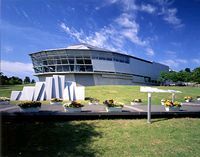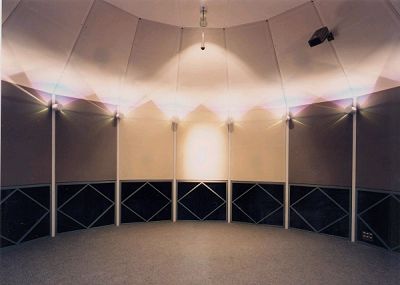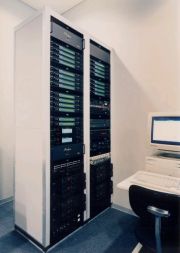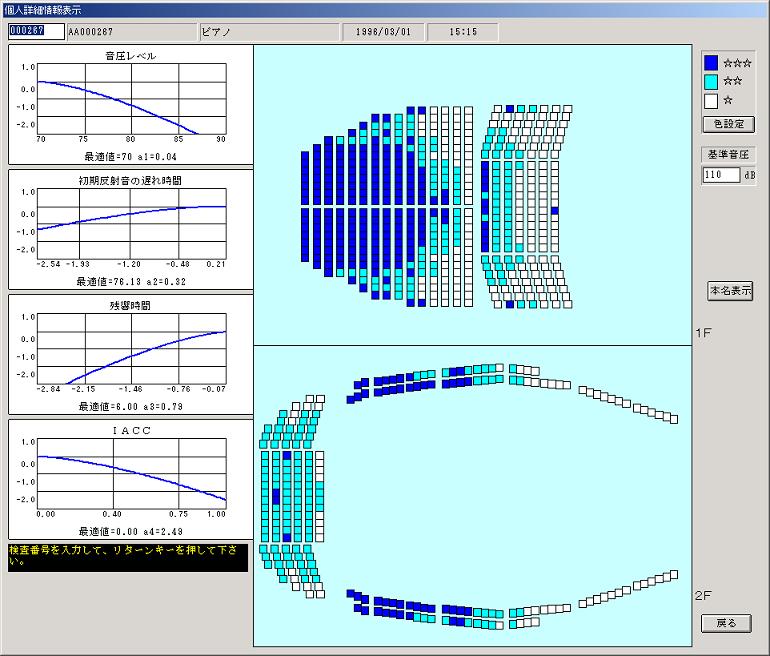

The virtual sound field reproduction for the audience and the musician, and the subjective preference test for seat selection are available in the sound simulation room of Miyama Conceru (Kirishima International Concert Hall).
 |
This sound simulation system was developed to reproduce the sound field
of concert hall in detail by simulating first to fifth reflective sound.
Such a complicated simulation was possible only in the laboratory at that
time, but we wanted to realize it for ordinary people.
In the sound simulation room, the sound fields of world famous concert halls can be reproduced by simple operation. This system also supports the musicians for their practice by simulating the stage sound. |
 |
Comments by Hiroshi Setoguchi, Sound coordinator of Miyama
Conceru
|
 |
|

| Subjective preference of the listener is tested by the
"preference test" for the acoustic parameters (LL, Dt1,
Tsub, IACC). Those parameters corresponds to loudness, reverberance, and
spaciousness of sound field. The important point here is that listener's
sensitivity is also calculated for each parameter from a preference
function in addition to the preference score. The total preference score
is found as a sum of each score.
To calculate a listener's preference score at certain seat, the acoustic properties at that seat is measured before. Those acoustic parameters are calculated by the impulse response measurement. By comparing the listener's preferred values and the seat's physical values, preference score for the listener is calculated for every seat. Results are displayed as a seating map with different colors depending on the score. |